What is the Sun?
The Sun gives us heat and light. Have you ever wondered what the Sun is?
In this article you can find out:
- What the Sun is
- How the Sun's heat and light affect our daily life
- What ultraviolet light is
- How to measure sunshine hours
This resource is suitable for weather topics for primary school learners.
Video - What is the Sun?
Watch this video to learn about the Sun and the energy it provides us.
When you wake up in the morning, one of the first things you might notice is the light peeking through your curtains. This light comes from the Sun.
So, what is the Sun and why is it so important?
Well, the Sun is a star, a swirling ball of glowing gases. It looks a lot bigger than other stars, the ones we see in the night sky, because it is the closest star to us, 150 million Km away.
Its temperature in the centre is around 15 million°C.
The Sun gives off energy which we experience as heat, light and ultraviolet light, a kind of energy that you can’t see or feel.
We can feel the Sun's heat, especially on a clear summers day - when it's warm enough to wear a t-shirt without jacket. Even in winter, the heat from the Sun can melt the snow or ice on your street.
The Sun's light helps us to see clearly, even on cloudy days! It also helps us know what time of day it is; we get up in the morning when the Sun's light is bright and go to sleep when we can't see the Sun's light anymore.
Ultraviolet light is what can cause us to have a suntan, or sunburn if we’re not careful! We can protect ourselves from the Sun's ultraviolet light by applying Sunscreen that stops it getting into our skin and by limiting how much time we spend in the direct sunlight.
The Sun affects all of our weather.
The heat from the Sun can make our days hotter. We feel it most in the middle of the day when the Sun is shining down on us more directly from overhead.
The heat also evaporates cloud and fog - turning them from drops of liquid water into water vapour, an invisible gas. That can make for a clear, lovely day.
So, when you feel the Sun hitting your skin on a nice summer’s day, remember where the light and heat has come from, and how far the energy has travelled before reaching you.
Facts about the Sun
- The Sun is a star, a bright ball made up of glowing gases.
- Most of the Sun is a gas called hydrogen.
- The Sun is huge. You could fit the Earth into the sun almost one million times.
- The Sun gives us heat and light, even though it's 150 million kilometres away from the Earth!
- The Sun also gives us ultraviolet light. This is a type of energy that you can’t see or feel but which can give you sun burn.
The power of the Sun
Discover how we can measure energy from the Sun and protect ourselves from its heat and light in this slideshow.
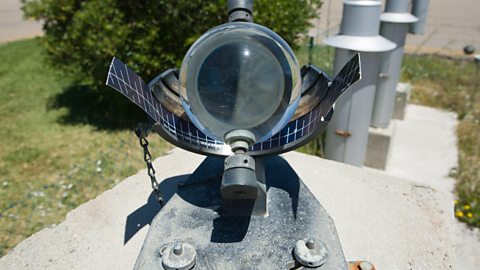
Image caption, Sunshine recorder
This sunshine recorder focuses the sun's rays through the crystal ball and burns a hole onto the strip of card underneath. The number of burn marks and their length shows how much sunlight there has been during a day.
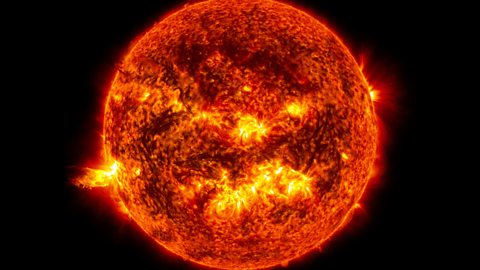
Image caption, Energy of the sun
Although the sun is 150 million km away from us on Earth, we can still see its light and feel its heat.
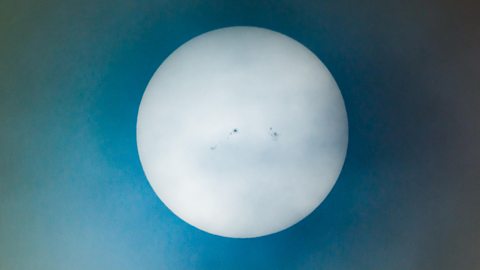
Image caption, Never look directly at the sun
We can see the sun's light even on cloudy days. But we must never look directly at the sun.

Image caption, Taking care in the sun
The sun's ultraviolet rays can cause sunburn. Putting on sunscreen can protect our skin.

Image caption, Stay in the shade
As well as applying sunscreen, we need to stay shaded from the sun and wear a hat to prevent our skin being burned.

Image caption, Hot days
On hot days we want to cool down from the sun's heat so there's always a queue for the ice cream van!
1 of 6
How to measure sunshine hours
Video - Measuring sunshine hours
With help from BBC Weather's Kawser Quamer, learn:
- Why it is important to measure sunshine hours
- How we measure sunshine at weather stations
- The history of the Campbell-Stokes sunshine recorder
KAWSER: It's going to be a sunny day, well, for some of us. And if we take a look at the weather map, we can see where it's going to be sunny where we don't have any cloud and it's clear. Now the amount of sunshine that we get can affect our daily lives in lots of ways. And that's why it's very important to find out how much sunshine there is. So how do we measure sunshine hours? And why is it useful?
Farmers need to know if the crops are getting enough sunshine and if there's too much sun they'll need to water the crops more or pick fruit to stop the sun drying it out. We need to be aware of how much time we spend in the sun and apply sun cream to protect our skin from damage.
Sunshine is measured at weather stations all around the UK. Let's see how it's measured at the MET Office in Edinburgh.
PUPIL: Can you tell us how sunshine hours are recorded?
MET OFFICE WORKER: Yeah, we measure sunshine using a sunshine recorder like this. It works on the same principle as when you have a magnifying glass and you focus it on a piece of paper which then burst into flames. In this case, this sphere is your magnifying glass and the card underneath is your paper. And as the sun moves round, this focuses on a different part of the card as it goes round and you end up at the end of the day with a card that looks a bit like that. You add up the length of all the burnt through bits. Then, with each of those white lines being an hour apart, you can then work out exactly how much sunshine you've had during the day.
KAWSER: The Campbell Stokes sunshine recorder was invented by John Francis Campbell in 1853 and it was updated by Sir George Gabriel Stokes in 1879. In the past, this was the way all sunshine hours were recorded.
PUPIL: How do we record sunshine hours nowadays?
MET OFFICE WORKER: Nowadays, we use this instrument: a sunshine duration detector. It's measuring the strength of the sun as it hits it. And whenever the strength of the sun is one hundred and twenty watts per square metre, it will interpret that as being sunshine, it'll give you a total for every hour of the day and total for the full day.
KAWSER: You don't need special equipment to measure sunshine hours. You can do it by observation. Count sunshine hours where you are by making a chart from sunrise to sunset and marking when the sun is in the sky. But be careful when looking up to the sky that you don't look into the sun.
PUPIL: Hey Mia, how much sunshine did we have today?
PUPIL: At 11am, we had sunshine then at twelve noon, we had cloud with a little bit of sunshine and at 1pm we had sun and at 2pm we had clouds again.
KAWSER: So now you know how to measure sunshine hours, maybe you can measure how much sunshine you get where you are.

Key words about the Sun
- star - A bright ball of glowing gases including hydrogen and helium.
- evaporation - When water turns into a gas.
- water vapour - Water in the form of an invisible gas.
- ultraviolet light - A type of energy, given off by the sun. Ultraviolet light can affect our skin and give us sunburn if we're not careful!
- sunscreen - A special cream that we need to rub on ourselves to stop the sun damaging our skin.
Test your knowledge
Quiz
Try this short multiple choice quiz to test your knowledge of the Sun
Challenge

Write a report about the Campbell-Stokes sunshine recorder.
Can you do your own research and write a clear informative report about the Campbell-Stokes sunshine recorder?
Here are some tips for writing your report:
- Before you write a report, it is important to research the subject. Make organised notes in preparation.
- When you are ready to write your report, start with a large clear title.
- Write a short introduction to let the reader know what you are writing about.
- Break up your information with subheadings.
- Use your notes to write clear detailed paragraphs under the different headings.
- Include pictures to make your fact file more interesting.
- Your report should use formal language and shouldn't include any of your opinions.
If you need some help writing a report, you can get more information here: How to write a report.
More to learn about the Sun
How can we use the energy of the Sun to generate electricity?
Solar energy. revision-guideSolar energy
Solar power uses the energy of the Sun to generate electricity. Find out how solar power works and how it can help us live more sustainably.
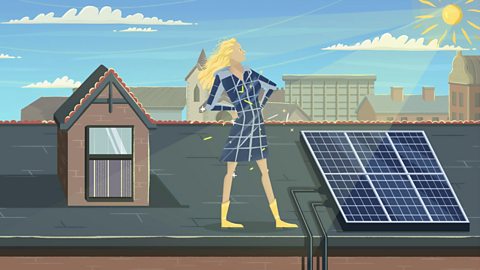
More on Weather
Find out more by working through a topic
- count3 of 24

- count4 of 24
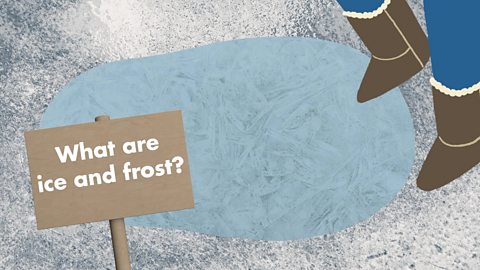
- count5 of 24

- count6 of 24
